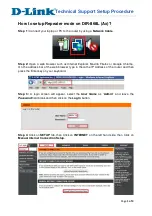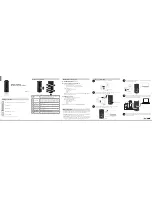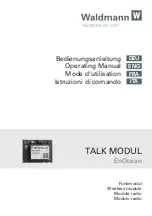
Copyright © 2004-2005, Vivato, Inc.
160
The CSMA/CA protocol used by
networks is a variation on CSMA/CD (used by
In CSMA/CD the emphasis is on collision
detection
whereas with CSMA/CA the emphasis is on collision
avoidance
.
CTS
A
clear to send
(CTS) message is a signal sent by an
client station in response to an
request
to send
(
) message. The CTS message indicates that the channel is clear for the sender of the RTS
message to begin data transfer. The other stations will wait to keep the air waves clear. This message is a
part of the IEEE 802.11
.)
dB
"dB" is the abbreviation for decibel, which is a logarithmic unit of relative signal level. dB units are
commonly used for describing gains or losses in radio frequency (RF) signal levels, rather than using linear
values, because of their ease of use when calculating signal level changes. Using dB units, signal gains
and losses are simply added or subtracted, rather than being multiplied or divided as they would for linear
calculations. A common use of dB units is the signal-to-noise ratio (SNR) measurement that compares the
level of the received signal relative to the noise level.
dBm
"dBm" is the abbreviation for decibel units relative to 1 milliwatt of power. A wireless card may transmit at
100 mW of RF power, which equates to 20 dBm. 0 dBm = 1 mW. Signals of <1 mW result in negative
values; –3 dBm equates to 0.5 mW. dBm units are typically used to report the signal level of an associated
client.
DCF
The
Distribution Control Function
is a component of the IEEE 802.11e Quality of Service (QoS) technology
standard. The DCF coordinates channel access among multiple stations on a wireless network by
controlling wait times for channel access. Wait times are determined by a random backoff timer which is
configurable by defining minimum and maximum contention windows.
DHCP
The
Dynamic Host Configuration Protocol
(DHCP) is a protocol specifying how a central server can
dynamically provide network configuration information to clients. A DHCP server "offers" a "lease" (for a
pre-configured period of time—see
) to the client system. The information supplied includes the
client's IP addresses and netmask plus the address of its
servers and
.
DNS
The
Domain Name Service
(DNS) is a general-purpose query service used for translating
fully-qualified
names
into Internet addresses. A fully-qualified name consists of the hostname of a system plus its domain
name. For example,
www
is the host name of a Web server and
www.Vivato.net
is the fully-qualified name
of that server. DNS translates the domain name
www.Vivato.net
to some IP address, for example
66.93.138.219
.
A
domain name
identifies one or more IP addresses. Conversely, an IP address may map to more than
one domain name.
A domain name has a suffix that indicates which
top level domain
(TLD) it belongs to. Every country has its
own top-level domain, for example
.de
for Germany,
.fr
for France,
.jp
for Japan,
.tw
for Taiwan,
.uk
for
the United Kingdom,
.us
for the U.S.A., and so on. There are also
.com
for commercial bodies,
.edu
for
















































